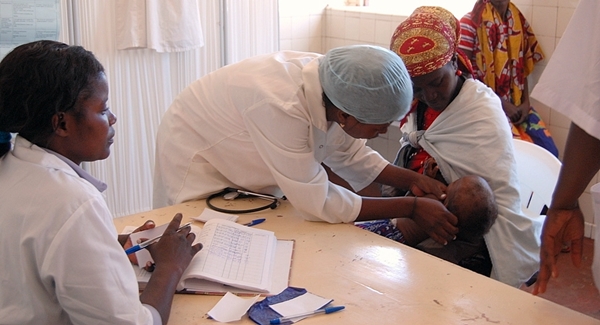16 March 2017. A biochemistry group in the U.K. developed simpler and potentially more efficient techniques for producing a first-line drug for treating malaria. Researchers from the lab of Cardiff University chemistry professor Rudolf Allemann describe their process in the 13 March issue of the journal Angewandte Chemie (paid subscription required).
Malaria, according to World Health Organization, affected 212 million people in 2015, which extracts heavy social and economic burdens in developing countries. In 2015, some 429,000 people died from malaria, of which 92 percent were in sub-Sahara Africa. Children under the age of 5 are particularly susceptible to the disease. Malaria is caused by parasites transmitted by Anopheles mosquitoes, but despite medical and other interventions such as insecticides and bed nets, the disease continues to plague many developing regions.
World Health Organization lists drugs with artemisinin as first-line treatments for uncomplicated malaria. The drug works by reducing the parasite load in the blood during the first 3 days of treatment, while companion drugs remove remaining parasites. Health authorities purchased some 334 courses of treatments with artemisinin in 2014, according to WHO, up from 11 million in 2005.
Artemisinin is derived from from the Artemisia annua, or sweet wormwood, plant used in Chinese herbal treatments for fever for more than 2,000 years. Extracting a usable drug from the plant, however, requires an extended process that still yields limited outputs of usable compounds. Allemann’s lab studies the chemistry of terpenoids, a large group of compounds found in natural sources and extracted for drugs, as well as industrial and commercial products.
In their research, Allemann and colleagues applied these techniques to generate dihydroartemisnic aldehyde, a precursor chemical for producing artemisinin that today requires 13 separate steps beginning with plant-derived compounds. In those steps, a protein called amorphadiene synthase from the plant reacts with and oxidizes an intermediate compound, farnesyl diphosphate, to produce dihydroartemisnic aldehyde, from which artemisinin is made.
The Cardiff team instead developed a synthetic, partially oxidized form of farnesyl diphosphate, in effect cutting out the previous steps in the process. Beginning with this synthetic farnesyl diphosphate, making dihydroartemisnic aldehyde requires 4, rather than the original 13 steps.
The authors note that market prices for wormwood plants can fluctuate markedly, making it difficult for manufacturers to predict their costs for producing artemisinin. Allemann believes the group’s simpler, synthetic method can help solve that problem. “What we’re left with,” says Allemann in a university statement, “is a novel and powerful approach for producing the drug that does not rely on extraction from large amounts of plants. Our approach could reduce market fluctuations in the supply chain of artemisinin.”
WHO reports that parasites resistant to artemisinin began appearing in parts of southeast Asia, particularly along the Cambodia-Thailand border, where parasites now are resistant to almost all available antimalarial medicines. While the group’s research does not address resistance, Allemann feels the synthesis process offers a way of finding a solution. “Our production method is also generic,” adds Allemann, “and can be used to create analogues of artemisinin that might allow us to tackle malaria in a number of new ways.”
The following infographic outlines the study.
More from Science & Enterprise:
- Gates Grant Funding Malaria Control Test Products
- Open-Source Discovery Yields Anti-Malaria Candidates
- Vaccine Shown to Give 1-Year Malaria Protection
- Quick Tests for Mosquito-Borne Viruses Being Developed
- FDA Gives Initial Clearance for Engineered Mosquitoes
* * *



 RSS - Posts
RSS - Posts
[…] Simpler Method Devised to Produce Malaria Drug […]